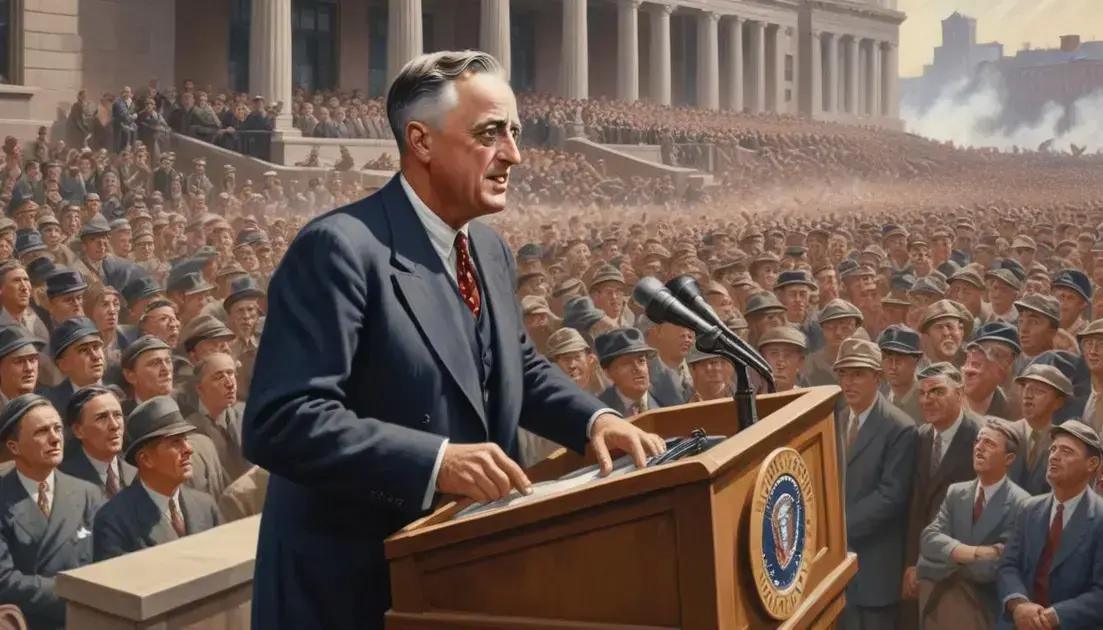
The secret cities that built the atomic bomb
The development of the atomic bomb involved secret cities like Oak Ridge and Los Alamos, which played critical roles in nuclear research during World War II. These locations were hubs for scientists working on enriching uranium and producing plutonium, essential for creating nuclear weapons. The use of the atomic bomb drastically changed global politics, leading to the Cold War and new treaties aimed at controlling nuclear proliferation. The legacy of the atomic bomb raises ongoing ethical discussions regarding its impact on warfare and international relations, emphasizing the need for responsibility in science and technology.
The Atomic Bomb has a rich and complex history, rooted in secret cities that played a crucial role in its development. Have you ever wondered how these hidden towns influenced the course of world events?
Introduction to the secret cities
The secret cities that built the atomic bomb were crucial during World War II. Places like Oak Ridge, Tennessee, were established to help the war effort. These hidden towns were specially created to develop nuclear technology.
Oak Ridge and Its Role
Oak Ridge was a major site for the Manhattan Project. Thousands of workers moved there, often without knowing what they were building. They were involved in creating materials needed for the atomic bomb. It was a top-secret operation that changed history.
Life in a Secret City
Life in these cities was unique. Workers lived in prefabricated houses and shared tight-knit communities. Many had no idea about the work’s true nature. The focus was on teamwork and the shared goal of ending the war.
A Lasting Impact
The creation of atomic bombs altered global politics forever. The use of these weapons brought about the end of the war but also raised ethical questions. The legacy of these hidden cities continues to shape discussions about nuclear energy and war.
Understanding these secret towns helps us know how technology can change society. These once-hidden places played a vital role in our world today. The memories and consequences of their work still echo in our lives.
Role of Oak Ridge
Oak Ridge played a major role in developing the atomic bomb. This secret city was created during World War II. It housed thousands of scientists and workers, all focused on one goal: winning the war.
Building the Bomb
In Oak Ridge, scientists worked on enriching uranium. They needed this material for the bomb’s core. The facilities here were state-of-the-art, using impressive techniques to produce large amounts of uranium quickly and secretly.
A Unique Community
The city was built just for this mission. Workers moved in, many without knowing their task’s purpose. They lived in close quarters, sharing everything from meals to ideas. Community life was important, with everyone focused on teamwork.
Lessons Learned
The work in Oak Ridge taught many lessons about science and ethics. The decision to develop such a powerful weapon led to serious debates. While it helped end the war, it also raised questions about the future of warfare and human responsibility.
Oak Ridge remains a symbol of how science and secrecy can change the world. It’s a reminder of both human creativity and the challenges that come with great power.
The importance of Los Alamos
Los Alamos was incredibly important to the atomic bomb project. This site became the top-secret laboratory where much of the bomb’s design took shape. Scientists from many fields came together to solve complex problems.
Key Contributions
At Los Alamos, scientists worked on the science of nuclear fission. They discovered how to split atoms to release energy. This discovery was key in creating a powerful weapon. Their collaboration led to groundbreaking research that moved quickly due to wartime urgency.
A Unique Collaboration
The team at Los Alamos included some of the brightest minds. Physicists, chemists, and engineers all contributed ideas. Their teamwork was essential to turning theory into reality. They faced many challenges but remained focused on their goal.
Changing the World
The work at Los Alamos changed the world forever. The atomic bomb ultimately ended World War II. However, it also sparked debates on ethics and warfare. Many people still discuss the moral questions surrounding nuclear weapons today.
Los Alamos stands as a reminder of human ingenuity and the power of science. It shows how important collaboration can be in achieving ambitious goals.
Hannford and its execution
Hannford was another crucial site for the atomic bomb project. This facility focused on producing plutonium, a key ingredient for nuclear weapons. The work done here was high-stakes and highly secretive.
Producing Plutonium
At Hannford, reactors were set up to create plutonium through nuclear reactions. This process involved splitting uranium atoms to produce the energy needed. The team faced many technical challenges but succeeded in creating enough material for bomb production.
A Community in Secrecy
The workers at Hannford were part of a tight-lipped community. Many had no idea about the full nature of their work. They contributed to a larger mission and often stayed focused on their daily tasks.
Impact on the War Effort
Hannford’s output significantly influenced the atomic bomb’s development. The plutonium produced here was essential for one of the bombs dropped in Japan. This facility helped shift the balance in the war, affecting thousands of lives.
The execution of this project raises questions about the ethics of nuclear weapons. The decisions made at Hannford changed the world forever, reminding us of the power and dangers of scientific progress.
Impacts of the atomic bomb on global politics
The atomic bomb had huge impacts on global politics after World War II. It changed how countries viewed power and security. Nations realized that nuclear weapons could shift the balance of power.
Start of the Cold War
With the bomb, tensions rose between the United States and the Soviet Union. Each country aimed to build a stronger nuclear arsenal. This competition led to the Cold War, where both sides tried to outdo each other without direct conflict.
New Alliances and Treaties
The fear of nuclear war also changed alliances. Countries formed new partnerships for protection. Treaties emerged to limit nuclear weapons, like the Nuclear Non-Proliferation Treaty. This helped ease some tensions and promote peace.
Ethical Debates
The use of the atomic bomb sparked ethical discussions across the globe. Many questioned the morality of using such destructive weapons. These debates continue today, influencing policies around war and peace.
It’s clear that the atomic bomb reshaped global politics in many ways. It taught leaders that the threat of nuclear weapons has long-lasting effects on international relations.
Conclusion
The story of atomic bomb development is a complex one. From secret cities to powerful discoveries, every part played a role. These events shaped our history and affected global politics in many ways.
The Legacy of the Atomic Bomb
Today, we still feel the impact of the atomic bomb. It influences discussions about war and morality. The lessons learned remind us of the consequences that come with scientific power.
Future Considerations
As we move forward, it’s important to think about our choices. Discussions on nuclear weapons and ethics remain vital. Understanding the past helps guide our future decisions.
In the end, the atomic bomb’s legacy teaches us about responsibility and cooperation. We must strive for peace and safety in our world.
Conclusion
In conclusion, the development of the atomic bomb has had lasting effects on our world. From the secret cities that enabled its creation to the complex discussions about its use, every aspect is important. This history teaches us about science, power, and responsibility.
We’ve learned that with great power comes great danger. It’s vital to think carefully about the future of nuclear energy and weapons. By understanding the past, we can make wiser choices today.
Moving forward, let’s focus on promoting peace and cooperation. We must remember the lessons of history so we can work towards a safer and better world for all.


